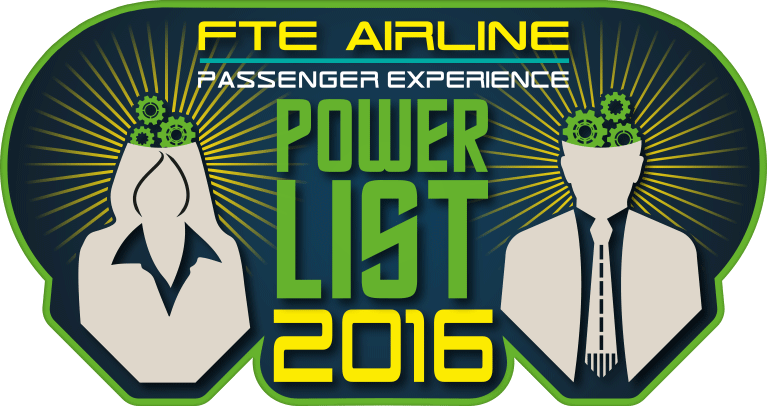
The FTE Airline Passenger Experience Power List is an independent initiative that identifies the 25 airline employees who are most empowered to enhance the end-to-end passenger experience, both at their own airline and on a global scale by raising customer experience benchmarks. It is important to note that the Power List is not simply a ranking of today’s top 25 airline customer experiences, but rather a list of the top 25 individuals who have led significant customer-focused improvements over the last 12 months and have the ability, experience and tools at their disposal to further enhance the end-to-end customer experience in the months ahead.
All of the figures on the Power List are ultimately responsible for the end-to-end customer experience within their respective organisations, and have been identified based on a variety of factors, which can be viewed in detail at the bottom of this page.
In recognition of their important role in raising passenger experience benchmarks, every member of the FTE Airline Passenger Experience Power List will be granted a complimentary ‘Golden Ticket’ to Future Travel Experience Global 2016, which will take place in Las Vegas from 7-9 September 2016. FTE Global is firmly established as the annual meeting place for those responsible for improving airline and airport customer experiences around the world to network, learn and seek inspiration for their next wave of product and service innovations.
25
Bo Lingam, Chief of Operations and Planning, AirAsia
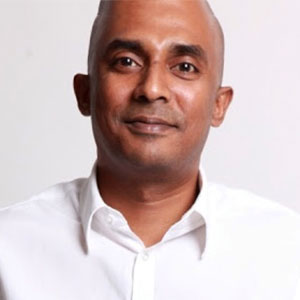

The AirAsia Group, which broke the 50-million passenger mark in 2015, has revolutionised air travel in Asia since its acquisition by Tony Fernandes 15 years ago. The low-cost carrier is a major advocate of self-service – self-tagging, bag drop and home-printed bag tags have all been areas of investment – while other digital and technology-focused investments provide more insight into its customer experience strategy. The introduction of a new app in late-2015, which is available in 11 languages, has helped to simplify the pre-travel and day of travel experiences for customers. In-flight, passengers can access Twitter and other social media channels on select flights thanks to the introduction of the roKKi Chats Instant Messaging platform. The Group’s ambitions were laid bare in June 2016 with a $12.6 billion firm order for 100 Airbus A321neos, which increases its already-record order tally for Airbus single-aisle aircraft to 575 aircraft. Already serving more than 120 destinations in 24 countries, AirAsia’s reach continues to expand. Relentless investment, and the desire to improve the customer experience as passenger traffic continues to grow, earns Bo Lingam, Chief of Operations and Planning, AirAsia the #25 spot on the FTE Airline Passenger Experience Power List 2016.
24
Bjørn Erik Barman-Jenssen, Director Ground Operations and In-flight Services, Norwegian Air Shuttle
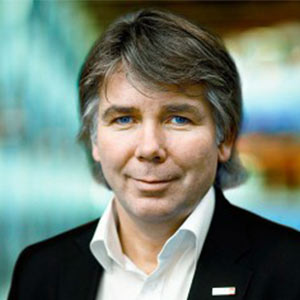
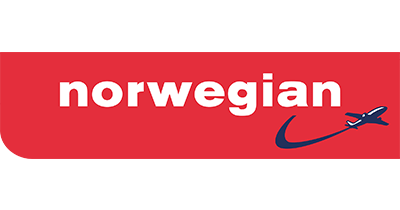
As Norwegian Air Shuttle continues to expand its long-haul, low-cost route network, it is also investing in its customer experience, which is a key aspect of its proposition to travellers. The investment in new Dreamliners for its long-haul services is a huge positive from a passenger experience standpoint, and the fact that the carrier says it plans to quadruple its long-haul fleet within five years gives you some idea of the scale of its ambitions. Single-aisle fleet renewal plans are also in place. In fact, Norwegian has just placed a new order for 30 Airbus A321LRs. For a low-cost carrier, the Norwegian Air Shuttle experience is impressive. The carrier has offered in-flight Wi-Fi for the last five years and it recently announced the launch of a live in-flight TV service – something of a novelty for a European airline. Passenger numbers exceeded 25 million for the first time in 2015 and with Norwegian forecasting further growth in 2016, its low-cost, passenger-centric approach appears to be paying off. Its long-haul expansion may not be looked upon kindly by many US-based carriers but Norwegian Air Shuttle is shaking up the market and its strategy seems to be working. Bjørn-Erik Barman Jenssen, Director Ground Operations and In-flight Services, comes in at #24 on the Power List.
23
Edouard F. Piquet, Senior Vice President Customer Experience, Aeromexico

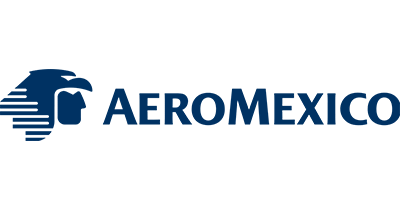
With a firm order in place for 60 Boeing 737 MAX 8s and 9s, Aeromexico is turning its attentions to enhancing its product and service offer to provide a customer experience that matches up to its fleet renewal plans. The 32 million passengers carried in 2015 marked double-digit year-on-year growth for the Mexican carrier. As part of its customer experience improvement effort, Aeromexico recently became the first airline in the world to install Gogo’s 2Ku high-speed in-flight connectivity solution, which will benefit passengers on 737-800 aircraft. Meanwhile, passengers flying on 787-8 and 787-9 services can make use of Panasonic-powered Wi-Fi. In addition to embedded IFE screens, passengers can also experience in-flight Netflix streaming, thanks to a trial being undertaken with Gogo. Aeromexico is also investing in improving its ground-based experience, as is highlighted by the recent order for 120 self-service-kiosks, which include functionality to purchase ancillary items, such as Wi-Fi access, during the check-in process. The kiosks will be installed in the likes of Mexico City, Monterrey, Culiacan, Guadalajara, Chihuahua and Merida. Thanks to the ongoing efforts to improve the passenger experience on the ground and in-flight, Aeromexico’s Edouard F. Piquet, Senior Vice President Customer Experience, is #23 on the Power List.
22
Reuben Arnold, Senior Vice President – Marketing & Customer Experience, Virgin Atlantic Airways
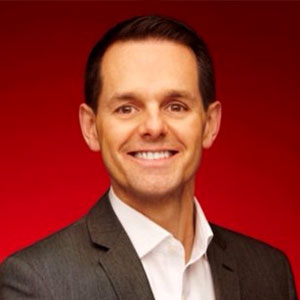
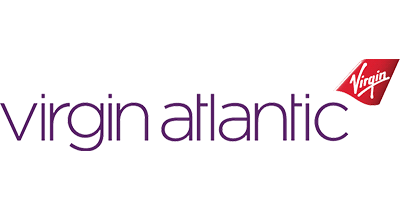
The smallest airline on the Power List in terms of passenger numbers having carried slightly less than 6 million travellers in 2015, Virgin Atlantic continues to work hard to achieve its ambition, which is “to be the airline most loved by our customers”. The airline’s fleet expansion is based around the addition of Boeing 787-9 aircraft and A350-1000s to its fleet, and its customer-focused strategy appears to be paying off, with its net promoter score continuing to climb. Flight attendants have been put through the bespoke ‘Me and my customer’ training programme to ensure they are fully equipped to deliver the best possible customer experience. £300 million has also been set aside for customer experience enhancements between now and 2018, with the rollout of onboard Wi-Fi and Clubhouse refurbishments among the most tangible improvements. Virgin Atlantic has also partnered with Microsoft of late to develop the ‘Immersive Digital Experience’, which enables customers to tap into virtual reality technology to explore the carrier’s premium offer. Its dedication to offering something different is further highlighted by one-off in-flight experiences ranging from an onboard live music performance to a 4D entertainment experience. Thanks to this customer experience flair, Reuben Arnold, Senior Vice President – Marketing & Customer Experience, Virgin Atlantic Airways, comes in at #22 on the FTE Airline Passenger Experience Power List 2016.
21
Stephanie Smitt Lindberg, Vice President Customer Journey & Loyalty, SAS Scandinavian Airlines

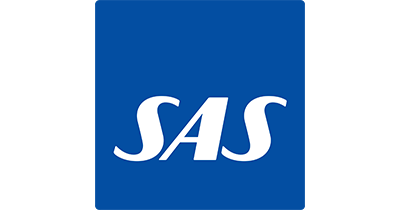
The modernisation of its fleet continues to be at the centre of SAS’ investment strategy. Its order for 30 Airbus A320neos, four A330 Enhanced and eight A350s emphasised this, while its A330-300s have received cabin upgrades and refurbished A340-300 aircraft have been delivered at a rate of one per month of late. From its trial of silent morning flights to the launch of an upgrade bidding service, and the introduction of a new ‘Go Light’ fare to the one-touch PayPal payment solution, various new initiatives have been launched in recent months. The Wi-Fi product on SAS’ long-haul fleet, plus on 10 Boeing 737-800s that fly within Europe, ensures that passengers can stay connected, while the IFE offer has been upgraded, with power outlets also installed as part of the cabin upgrades. Despite a slight drop in full-year passenger numbers in 2015, this year looks set to deliver welcome growth for the Scandinavian airline. Stephanie Smitt Lindberg, Vice President Customer Journey, is #21 on the Power List.
20
Ben Minicucci, President & Chief Operating Officer, Alaska Airlines
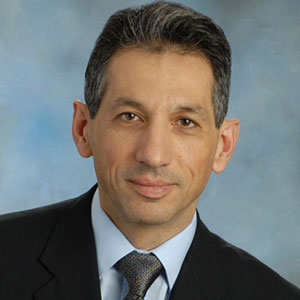
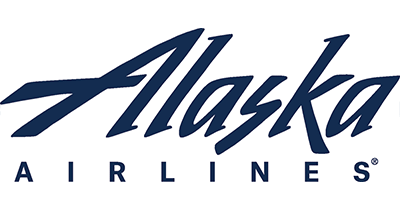
Alaska Airlines prides itself on offering a unique customer experience with special features inspired by its Alaskan heritage. The carrier, which carried 32 million passengers in 2015, is now expanding its reach with the acquisition of Virgin America, which will officially become a subsidiary of Alaska Air Group, Inc. later this year. The airline’s Customer Innovation Department ensures that passenger experience remains high on the agenda. In-flight, passengers can find power outlets, an IFE streaming service, Wi-Fi on select aircraft, and an artisan food and beverage offer. Later this year, Alaska Airlines will introduce a new ‘Premium Class’ product, which will be added to up to 60 aircraft before year-end, while its ‘Space Bins’ are also being rolled out to increase space for carry-on bags. Alaska, which was the first airline in the US to offer self-tagging, has also recently become the first to allow its frequent flyers to redeem miles to joins TSA PreCheck, which provides an expedited airport security experience. As Alaska Air Group, Inc. works towards obtaining a single operating certificate for Alaska Airlines and Virgin America, Ben Minicucci, President & Chief Operating Officer, Alaska Airlines, is charged with further improving the customer experience, which is why he earns the #20 place on the Power List.
19
Paul Jones, Executive General Manager Customer Experience, Qantas


After several tough years financially, Qantas has seen profits soar over the past year, with the carrier’s CEO, Alan Joyce, hailing the figures as the best in the airline’s 95-year history. This upturn is mirrored by its ongoing investment in enhancing the customer experience. Qantas has confirmed that it will acquire eight Boeing 787-9s from 2017 onwards, while a number of projects have brought about improvements to its current passenger experience. This year the airline has opened its first dedicated premium lounge at Heathrow Airport, while a refurbishment project in Brisbane and a new domestic Business lounge in Perth are among the other highlights. Qantas has also been participating in Smart Security trials, as part of wider industry efforts to improve the airport security screening checkpoint. Improvements have been made onboard, too. A partnership with HBO has brought fresh content to the skies, a dedicated iPad app has been introduced to keep young flyers entertained, and the airline will start in-flight connectivity trials on a Boeing 737 later in 2016, ahead of a potential rollout across its domestic fleet. As the man overseeing Qantas’ customer experience strategy, Paul Jones, Executive Manager Customer Experience, is #19 on the Power List.
18
Takayuki Aze, Vice President, CS & Product Services Department, ANA All Nippon Airways

As we outlined on last year’s Power List, improving the customer experience is not only part of ANA’s strategy to beat off competition from other carriers in the region, but also the bullet train in Japan, which provides competition on domestic routes. The airline already boasts around 50 million annual passengers, but its growth targets for the next five years are ambitious, to say the least. ANA Holdings hopes to become the “world’s leading airline group by customer satisfaction and value creation”. Over the next five years it plans to increase international passenger revenues by 40%, triple revenues from its LCC division and expand the group fleet to 300 aircraft, including its first three Airbus A380s. The carrier introduced its first Boeing 787-9 Dreamliner in 2015. This year All Nippon Airways has added Wi-Fi and live TV to its Japanese domestic services (Wi-Fi is also available on B777-300ER, B767-300ER and B787 aircraft), launched Japan’s first self-service bag drop system at Tokyo Haneda Airport, and added self-tagging facilities at Tokyo Narita. The carrier has also launched a specially developed tablet device called ANA Communication Board. The speech and pictogram functionality means this tool can be used to support smoother communications at the airport and in-flight with passengers of multiple nationalities, as well as with those who require special attention. Clearly, ANA is thinking outside the box to improve and simplify the customer experience, which is why ANA’s Takayuki Aze, Vice President of CS & Product Services Department, is #18 on the Power List.
17
Kenny Jacobs, Chief Marketing Officer, Ryanair
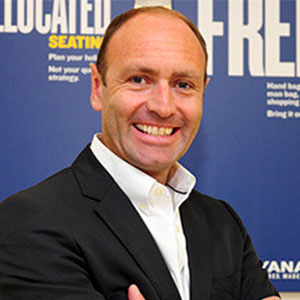
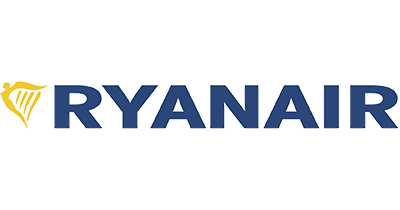
Since the launch of its ‘Always Getting Better’ programme in 2014, Ryanair’s customer experience credentials have soared. The low-cost carrier clearly has big ambitions in this space and recently announced that it intends to become the “Amazon of air travel”. The launch of ‘Ryanair Rooms’ – its own low-cost accommodation platform – is part of this strategy. Guided by a Customer Charter, which was unveiled in 2015, Ryanair has pushed customer experience towards the top of its list of priorities. Among other recent developments are the introduction of new aircraft interiors (gone is the garish yellow), the rollout of dedicated ‘Leisure Plus’ and ‘Business Plus’ fares, and a raft of mobile app updates. These include a ‘one flick’ payment system, a ‘Rate my flight’ function for customer feedback, and the ability to easily book ancillary items. The carrier is also planning to introduce auto check-in and auto boarding passes to simplify the pre-flight experience, while baggage options have been simplified, partly in response to customer feedback. In fact, the end-to-end mobile booking process has been reduced from an arduous five-and-a-half minutes to just 97 seconds. Investment in a new customer relationship management system has also laid the foundations for more personalised interactions, all driven by Ryanair Labs, which is the airline’s dedicated technology lab. The carrier has also revealed to FTE that it is taking in-flight entertainment and connectivity “very seriously”. Although implementation costs are currently an issue, the fact that this is being explored is a positive from a customer experience viewpoint. The carrier, which is the world’s largest operator of the Boeing 737-800 and the launch customer of the Boeing 737 MAX 200, broke the 100-million passenger barrier in 2015 – a 17% year-on-year increase. With its reach expanding and its focus on improving and personalising the customer experience intensifying, Ryanair’s Kenny Jacobs, Chief Marketing Officer, takes the #17 spot on the FTE Passenger Experience Power List.
16
Klaus Goersch, Executive Vice President & Chief Operating Officer, Air Canada

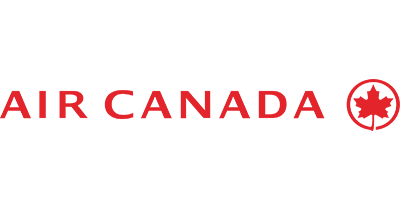
The 41 million passengers carried by Air Canada in 2015 marked a 7% increase on 2014. The renewal and expansion of Air Canada’s wide-body fleet is a key element of its growth plans and last year alone the airline added six Boeing 787s. A total of 37 B787s are on order, while an order is in place for more than 100 B737 MAX narrow-bodies and 40 Bombardier CS300s. The carrier is introducing the B787’s three-cabin international product and seating standard on all 23 Boeing B777-300ER and B777-200LR aircraft and its new Boeing 777-300ER aircraft. Having equipped its Airbus A319, A320 and A321 and Embraer 190 aircraft, as well as its Air Canada Express Embraer 175 aircraft and Bombardier CRJ-705, with onboard Wi-Fi, Air Canada is also investing in rolling out Wi-Fi on its Air Canada rouge and wide-body fleets. This year, improving its digital products is also among the priorities, with plans in place to invest in its website and mobile apps to help improve the user experience. More exclusive airport check-in areas for premium passengers have been introduced in recent months and the lounge experience has been upgraded with new products and services. The ‘Premium Agent’ service is being rolled out at its Canadian and US hubs this year to give high-end customers a more personalised level of service and in addition, a new customer relationship management system is being implemented. In 2015, overall satisfaction with Air Canada’s service climbed three percentage points, suggesting that its customer-focused efforts are paying off. With these efforts continuing in 2016, Klaus Goersch, Executive Vice President & Chief Operating Officer, Air Canada takes the #16 spot on the Power List.
15
Mike Tod, Chief Marketing & Customer Officer, Air New Zealand

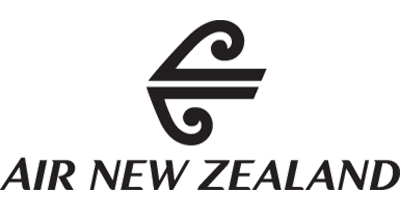
Air New Zealand, which accounts for around 15 million passengers annually, is well known for embracing innovation. Ranging from its Economy Skycouch to its TripAdvisor integration on its Android-based IFE system, the carrier is always keen to stand out from the crowd. In recent times the airline has made a significant investment in retrofitting its older aircraft to create a consistent, high-level in-flight experience. Another example of innovation is the airline’s use of 3D printing technology – the fold down cocktail trays in its Business Premium cabin were created using this technology. On the ground, Air New Zealand launched a first-of-its-kind biometric-enabled self-service bag drop system in late-2015 to simplify the departures experience for passenger flying from Auckland, while it continues to explore the potential of electronic bag tags. Another standout initiative is the development of the ‘Airband’ for unaccompanied minors, which is a wristband that enables unaccompanied minors’ parents or guardians to receive regular updates on the child’s whereabouts when travelling. From its dedication to making use of the latest technologies, to its unique and fun personality (the famous Air New Zealand safety videos continue to attract millions of views on social media), Air New Zealand is among the leaders when it comes to customer experience. If its customer base and reach were larger, he may well have been higher up the list, but Mike Tod, Chief Marketing & Customer Officer, comes in at #15 on the Power List.
14
Aubrey Tiedt, Chief Customer Officer, Alitalia
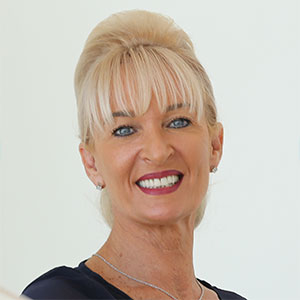

Since Etihad Airways’ acquisition of a 49% stake in the Italian flag carrier in December 2014, a notable effort has been made to enhance Alitalia’s customer experience at every opportunity. Last year saw the launch of the “new Alitalia”, which was quickly followed by upgrades to Economy, Premium Economy and Business Class cabins, the enrolment of staff into the Customer Excellence Training Academy, and lounge refurbishments at key destinations. In the last 12 months, the carrier has invested in self-service kiosks and bag drops at Fiumicino Airport, introduced a chauffeur service for premium customers, and the introduction of a tablet-equipped ‘Transit Team’ to provide assistance to travellers who are connecting at its Rome hub. The carrier has also introduced its ‘Dine any time’ concept, which offers premium customers more choice and flexibility around their in-flight dining experience. Alitalia is only half way through its three-year transformation programme and around €400 million will be invested in driving improvements this year alone. The carrier is on target to be profitable by 2017, which will be an impressive feat when considered in the context of the major investment in improving the end-to-end customer experience. Alitalia’s Aubrey Tiedt, Chief Customer Officer, comes in at #14 on the Power List.
13
James Ginns, Director Service Delivery, Cathay Pacific Airways

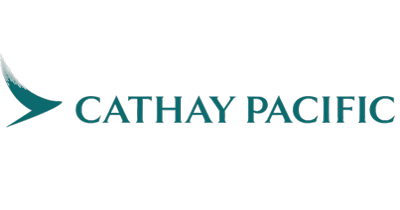
Cathay Pacific Airways, which took delivery of the first of 48 A350-900XWB aircraft in May, places customer experience towards the very top of its list of priorities, and further improvements have been made over the past 12 months. The A350, with its latest generation IFE system, onboard Wi-Fi, live TV news channels, power outlets, tablet holders and Business Class fully flat beds, is itself a showcase of Cathay’s enviable product and service offering. The carrier has opened a dedicated Innovation Centre, comprising designers, engineers, architects and entrepreneurs, all tasked with envisioning and delivering the future of travel for the Hong Kong-based carrier. The ‘Service Matrix’ app, which has been rolled out to empower cabin crew, is just one example of a product delivered by the Innovation Centre to date. The carrier has already overhauled its Departure Control System to support the future rollout of self-service technologies. In fact, along with its low-cost subsidiary, Dragonair (soon to be rebranded Cathay Dragon), Cathay recently launched self-tagging and bag drop facilities at Hong Kong International Airport. 34 million travellers flew with Cathay Pacific in 2015 and this number looks likely to increase in 2016. James Ginns, Director Service Delivery, is the man responsible for delivering a special customer experience to each of these travellers and he is #13 on the Power List.
12
Abigail Comber, Head of Brands & Customer Experience, British Airways

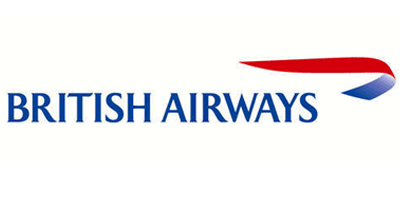
Total British Airways passenger numbers exceeded the 40-million mark in 2015. A number of investments are contributing to an improved customer experience for the British flag carrier, bringing about enhancements both on the ground and in-flight. The airline’s Boeing 747s and almost 100 of its short-haul aircraft have been beneficiaries of this investment in recent times, with cabin upgrades, upgraded IFE systems and the installation of more power outlets among the highlights. This year has already seen the addition of new A380 and B787-9 aircraft, with the latter including BA’s impressive new First Class cabin. British Airways is also focusing on passenger wellbeing, as is shown by the introduction of self-improvement courses on the IFE system, as well as an in-flight meditation course. In addition, the popular food pre-ordering service has been extended to cover more routes, a selection of premium lounges have been refurbished and a new iPad app has been launched in recent weeks. In May 2016, ‘Holidays by British Airways’ was launched, suggesting that the carrier is keen to play a bigger role in the wider travel experience in the years ahead. An advocate of self-service technologies, British Airways also continues to invest in its ‘Airport Futures’ programme to create a more seamless airport experience for travellers. With all of this in mind, Abigail Comber, Head of Brands & Customer Experience, British Airways, earns the #12 place on the Power List.
11
Akif Konar, Chief Commercial Officer, Turkish Airlines
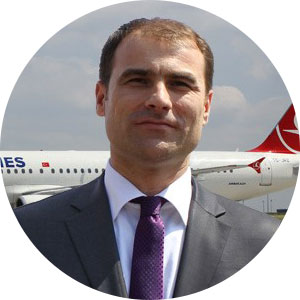
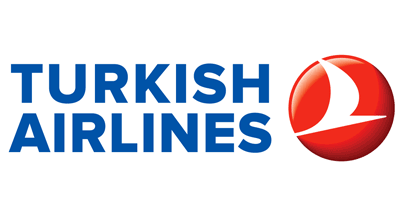
With passenger numbers increasing at a double-digit rate in 2015, Turkish Airlines carried in excess of 60 million passengers last year. The carrier has plans to double this number by 2023 and improving the passenger experience is a key part of its strategy to expand its customer base. The development of Istanbul New Airport, which will eventually cater for up to 150 million annual passengers, will support the airline’s growth, and the carrier has undertaken a variety of initiatives in recent months to improve the customer experience. An improved customer relationship management platform is helping the airline personalise its interactions with customers, while the development of a ‘Digital Innovation’ unit and a tie-up with start-up incubator ‘Plug & Play’ are helping to ensure the airline keeps pace with the latest digital and technological advancements. To support the airline’s growth strategy, huge investment is being made in expanding and modernising the fleet. In late-2015 the airline firmed-up a commitment for the purchase of 20 additional A321neos to go with the 72 it already had on order, as well as a total of 70 Boeing 737 MAX 8s, MAX 9s and 737-800s. The carrier’s strategy of investing in new technology and promoting Turkish hospitality is having a positive impact on the customer experience, which is why Akif Konar, Chief Commercial Officer, is #11 on the FTE Airline Passenger Experience Power List.
10
Marvin Tan, Senior Vice President Product & Services, Singapore Airlines

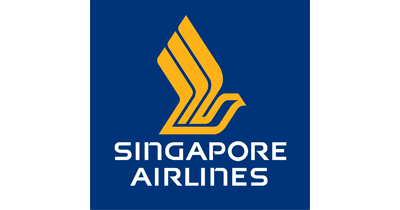
The Singapore Airlines customer experience is highly regarded and the five-star carrier continues to search for new ways to create unique and memorable experiences for its customers. The airline, which has this year added the A350-900 to its fleet, has added a Premium Economy product to its portfolio in the last 12 months and has also invested in various technology-focused projects to complement its famous levels of customer service both onboard and on the ground. The recent launch of the ‘Companion App’, which was developed with Panasonic Avionics and allows passengers to use their personal devices as second IFE screens, provides an example of its pioneering spirit, while its decision to opt for Thales’ Android-based IFE system for its post-2017 A350s shows that the carrier is not content to rest on its laurels. In addition, the forthcoming introduction of Global Xpress-powered connectivity on its long-haul fleet will be widely welcomed by passengers. On the ground, participation in self-service trials at Changi Airport provides insight into Singapore Airlines’ strategy to find a perfect balance between face-to-face service and self-service. With an expanding route network, more travellers will get the chance to experience the impressive Singapore Airlines in the coming months and years. Marvin Tan, Senior Vice President Product & Services, Singapore Airlines, is #10 on the Power List.
9
Michel Pozas Lucic, Vice President Customer Innovation & Care, Air France-KLM

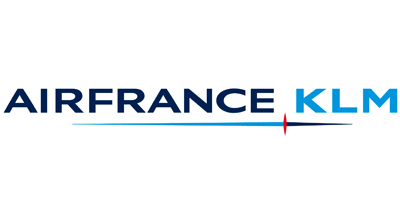
Innovation is very much at the heart of the Air France-KLM Group, which in recent years has upped its efforts when it comes to trialling and implementing new and emerging technologies. Having previously invested in trials of NFC boarding passes, permanent electronic bag tags, baggage tracking devices and biometric-enabled single passenger tokens, its passenger-facing robotics trial has grabbed the industry’s attention over the past 12 months. Earlier this year, Air France-KLM announced that it would install next generation self-service kiosks in 50 airports, while improvements have been made to the smartphone apps to provide travellers with all the information they need, when they need it. KLM has also invested in chatbots, becoming the first airline to use Facebook Messenger to communicate with passengers in an automated yet conversational manner. Since November, KLM has taken delivery of six Boeing 787-9 Dreamliners, complete with Wi-Fi and lie-flat business class seats, and Air France continues its upgrade to long-haul cabins. A ‘Night Service’ has also been introduced on select routes, which allows Business Class passengers to enjoy their meal at the airport instead of onboard the aircraft, therefore allowing them to rest for the entire flight. Air France-KLM is also making every effort to ensure it gets its IFEC offer right. Among the solutions that have been implemented or trialled to date are ‘AirFi’ boxes on two KLM 737-800s, the Air France Press app, and a separate IFE streaming solution on two Air France A320s in partnership with Orange. Full connectivity is also being rolled out across the long-haul fleet. While most airlines talk about the importance of data, Air France-KLM is taking action in this space, too. Air France has set up a data centralisation platform containing considerable amounts of information about its customers, which can be accessed in real time by Air France staff and crew to help them personalise the travel experience. The dedication to embracing innovation to help improve the end-to-end passenger experience places Michel Pozas Lucic, Vice President Corporate Strategy & Innovation, Air France-KLM, at #9 on this year’s Power List.
8
Sandra Pineau-Boddison, Senior Vice President, Customers, United Airlines
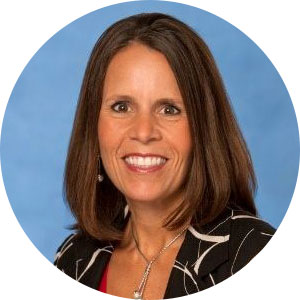

The huge reach of United Airlines is highlighted by the fact that it carried 140 million passengers in 2015. Its increasing customer base has access to a raft of new innovations, which have been rolled out over the past 12 months as the airline battles for supremacy in the ultra-competitive US market. The launch in June 2016 of the ‘United Polaris’ business class product was certainly a statement of intent, and the airline’s President & CEO, Oscar Munoz, declared that it will “change the game in international business travel”. A custom-designed premium seat has also been introduced to United’s narrow-body aircraft, while its Club Lounges are the subject of a multi-million dollar investment. In addition, the wireless IFE service has been extended to regional jets, while the catalogue of free IFE content has been expanded. Steps have been taken to empower crew to deliver the best possible levels of customer service, with 6,000 crew members on the ground equipped with iPhone 6 Plus handsets to help them provide assistance on the go. Also, the carrier’s app is continually being improved and to this end indoor maps and beacon-based wayfinding have been introduced, complementing Uber integration and mobile passport scanning. All of these efforts earn Sandra Pineau-Boddison, Senior Vice President, Customers, United Airlines, the #8 spot on the 2016 Power List.
7
Joanna Geraghty, Executive Vice President, Customer Experience, JetBlue Airways


The New York-based low-cost carrier’s tagline is “bringing humanity back to air travel”, and a number of innovations rolled out over the last 12 months highlight its dedication to achieving just this. It’s well known that the ‘Fly-Fi’ solution is currently regarded as the best and most reliable in-flight connectivity product in the industry, and it can now be found on all of JetBlue’s A320s and A321s, while installation in ongoing across the E190 fleet. The premium ‘Mint’ product – featuring private suites and lie-flat beds – is also being extended to more routes, while the carrier announced at the turn of the year a major cabin restyling for its A320s, which will include the introduction of a “fully connected in-seat experience”. On the ground, the new-look T5 lobby at New York’s JFK Airport provides a blueprint for the carrier’s forward-thinking vision for the airport experience of the future. Passengers flying from the New York airport can now make use of more than 70 self-service kiosks, self-tagging facilities and 12 bag drop locations, while roving staff members are on hand to provide assistance where needed. Plans are in place to bring this self-service experience to the carrier’s other focus cities in the near future. The carrier is also exploring the potential of electronic bag tags, as it continues its trend of taking a leadership approach. Such is the LCC’s desire to reinvent the air travel experience, it launched its own start-up lab in early 2016. This lab, called JetBlue Technology Ventures, will “invest in, incubate and partner with early stage start-ups” and now forms a key element of JetBlue’s strategy to shape the future travel experience. With the carrier continuing its efforts to inspire the creation of a more positive air travel experience, Joanna Geraghty, Executive Vice President, Customer Experience, JetBlue Airways, comes in at number #7 on the FTE Airline Passenger Experience Power List.
6
Reinhold Huber, Vice President Customer Experience Design, Lufthansa

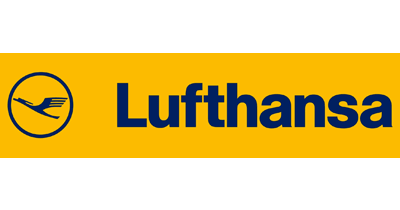
Lufthansa Group, which comprises Lufthansa German Airlines, Eurowings, Austrian Airlines and SWISS, carried 107.7 million passengers in 2015 and the Group’s flagship airline has made no secret of its desire to become the first five-star airline in the western hemisphere. Over the last 12 months the airline has been actively investing in digital solutions, ranging from the RIMOWA Electronic Tag baggage solution and touchless bag drop, to a tablet-based pre-flight shopping experience in partnership with Fraport. The carrier is also closely engaged with the start-up scene; Lufthansa Innovation Hub recently announced a team-up with start-up incubator Plug & Play as part of its efforts to source pioneering partners to help improve the customer experience. Big data and analytics are also very much in focus and are at the heart of the SMILE (Surpass My Individual Lufthansa Experience) programme, which is all about creating more personalised products, services and communications. The launch of a pre-flight IFE portal has also laid the foundations for the development of a more personalised in-flight entertainment experience. In-flight, Lufthansa passengers will soon have access to the Global Xpress-powered onboard broadband solution, while the airline has also signed up to a flight trial programme of the new European Aviation Network, starting in 2017. All of this comes after the completion of the most extensive cabin renewal programme in the airline’s history, which saw all long-haul aircraft refurbished. Earlier this year Lufthansa became the first airline to take delivery of the A320neo – the first of 116 A320neo and A321neos on order. Reinhold Huber, Vice President Customer Experience Design, Lufthansa, is #6 on the Power List
5
Gil West, Executive Vice President & Chief Operating Officer, Delta Air Lines
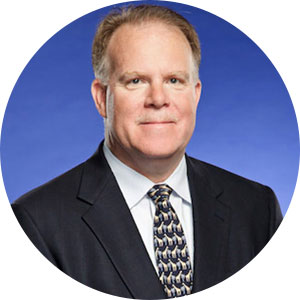
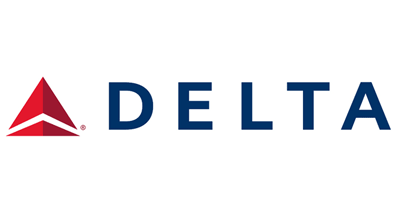
Amidst the battle for customer loyalty among the major US-based carriers, Delta Air Lines continues to invest in enhancing its customer experience across the board. The airline, which took delivery of its first Airbus A321 earlier this year and recently placed an order for 75 Bombardier CS100 aircraft with an option for 50 more, has made a number of significant passenger-focused statements in recent months. These include an investment in Gogo’s 2Ku in-flight connectivity service, the rollout of an in-flight Guest Service Tool on Nokia Lumia 1520 tablets, an upgrade to its embedded IFE system to create what it calls an “iPhone style experience”, and the introduction of more free content for travellers in all classes. Delta is also making a concerted effort to make improvements on the ground. New Delta Club lounges are being introduced, ‘Innovation Lanes’ have been purchased to improve the security screening experience at Hartsfield-Jackson Atlanta International Airport, and a $50 million investment in Radio Frequency Identification (RFID) technology will help to improve the reliability of baggage handling. Moreover, the popular ‘Early Valet’ programme has been re-introduced for summer 2016, meaning customer service agents will be on hand to pre-load passengers’ carry on bags into the overhead bins before the boarding process begins on select routes. With ongoing investment driving improvements to the end-to-end customer experience, Gil West, Executive Vice President & Chief Operating Officer, Delta Air Lines, is #5 on the 2016 Power List.
4
Calum Laming, Vice President Guest Experience, Etihad Airways


For an airline only just approaching its 13th birthday, Etihad Airways has made a huge impression on the industry to date, with a number of initiatives helping to raise the passenger experience bar for the entire industry. The luxurious ‘The Residence’ is the clearest example of the carrier’s willingness to invest in creating unique, high-end experiences. The new First Class Lounge & Spa at Abu Dhabi International Airport is among other recent highlights, but other examples highlight the fact that the carrier is not just focused on impressing premium customers. The airline recently joined TSA PreCheck, it has installed offsite check-in facilities at the Abu Dhabi Cruise Terminal, it operates a ‘Source Develop, Engage and Deliver’ programme to ensure staff receive the best possible training, and it is committed to achieving digital excellence. This point is highlighted by a 10-year, $700 million deal with IBM, which Etihad says will empower it to enhance the guest experience, develop world-class infrastructure and security, and improve efficiency. The organisations will also create a joint technology and innovation council in Abu Dhabi with the aim of developing more personalised travel solutions. This deal also covers Etihad Airways’ equity partners, so Air Serbia, Air Seychelles, airberlin, Alitalia, Etihad Regional, Jet Airways and Virgin Australia also stand to benefit. In the coming years, Etihad Airways plans to introduce new A380s, B787s, A350s and A320s to support growth, expand the route network and keep the fleet young. The 17.4 million passengers carried in 2015 marked a 17% increase on 2014, and with the impressive pace of growth expected to continue, the airline is clearly committed to ensuring the customer experience continues to exceed expectations. Calum Laming, Vice President Guest Experience, Etihad Airways, comes in at #4 on the Power List.
3
Rossen Dimitrov, Senior Vice President Customer Experience, Qatar Airways


Qatar Airways is an airline that likes to achieve firsts – whether it’s operating the first Airbus A350 commercial flight or becoming the first carrier in the Middle East to achieve IATA’s Fast Travel Platinum status in recognition of its self-service efforts. The airline is rather uniquely placed in the sense that it led the design of its own home airport – Hamad International Airport in Doha. As well as being able to make use of innovations such as home-printed bag tags and early bag check, passengers will soon be presented with bag drop services, which are being introduced as part of the wider ‘Smart Airport’ vision. The focus on improving the passenger experience extends beyond its home base, though, as highlighted by the recent opening of the plush Dubai Premium Lounge. As is to be expected of a Middle East-based full service airline, the Qatar Airways in-flight experience is truly impressive. As well as investing in new technology – including giving its IFE system a facelift and rolling out onboard connectivity – Qatar Airways also recognises the importance of customer service in the digital age. The carrier hosts weekly workshops for flight attendants, staff have been trained as certified Emotional Intelligence Practitioners, and an Elite Service training programme has been tailored to the needs of premium passengers. Having operated 50 aircraft a decade ago, Qatar Airways now boasts a fleet more than three-times that size and serves more than 150 destinations. With in excess of 300 aircraft worth more than $70 billion pending delivery, more and more travellers will have the chance to experience Qatar Airways’ high-end offer in the years ahead, while the existing fleet will be continually refreshed. Thanks to the impressive customer experience on offer today and the potential for further growth in the years ahead, Rossen Dimitrov, Senior Vice President Customer Experience, Qatar Airways is #3 on the Power List.
2
Adel Ahmad Al Redha, EVP and Chief Operations Officer, Emirates
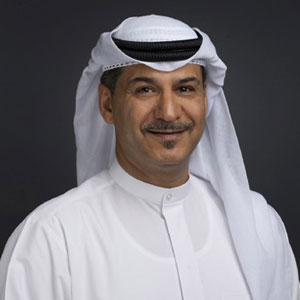

The Emirates customer experience is highly regarded by travellers and envied by other carriers, and the Dubai-based airline continues to be among the leaders in passenger experience terms. From recent investments in technology (including the launch of its upgraded IFE system in late-2015 and the rollout of inductive charging trays in some premium lounges) to the continual investment in crew training (which now includes virtual, immersive, game-based training) the carrier is willing to go the extra mile to create memorable experiences. In 2015, the airline carried in excess of 50 million passengers – a 9% increase on the previous year – and this figure is expected to rise sharply in the years ahead. The unveiling this year of a new fully-flat Business Class seat for its new Boeing 777-300ER aircraft marks an upgrade on the existing angled lie-flat seat offered by the airline and highlights the dedication to raising the bar further for premium customers. 23-inch IFE screens in First Class, onboard Shower Spas, Private Suites, and the A380 in-flight bar and lounge provide further evidence of the luxurious experience Emirates offers. However, economy passengers are not forgotten. A 500MB onboard Wi-Fi package still costs just $1 and the investment in larger IFE screens has filtered through to the back of the cabin. In fact, the 13.3-inch screens in economy on the new A380s and B777-300ERs set the industry benchmark, while a three-fold increase in media storage gives passengers access to 4,300 hours of entertainment. Emirates – which now has a premium lounge network spanning 39 destinations – is also leading the way when it comes to exploring the potential of new and emerging technologies. Following Emirates Group’s announcement of an enterprise-wide transformation initiative, which it says will position the Group as a “leading customer-centric, technology enabled travel experience” company, it revealed the launch of a data science lab in a five-year partnership with Oxford University. A major focus of this partnership will be redefining the customer experience through improved personalisation. Financial power combined with a desire to set the passenger experience benchmark for the industry gives Adel Ahmad Al Redha, EVP and Chief Operations Officer, Emirates, the #2 spot on the FTE Passenger Experience Power List 2016.
1
Robert Isom, Executive Vice President and Chief Operating Officer, American Airlines
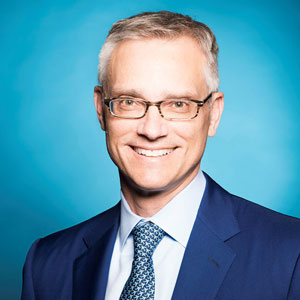

Having reported a record full-year net profit in 2015, American Airlines is investing heavily in improving its customer experience both on the ground and in-flight. The ongoing multi-billion investment is bringing about a multiplicity of passenger-focused improvements. A deal with ViaSat to bring broadband connectivity to its 737 MAX aircraft, the launch of a Premium Economy product, the extension of its wireless IFE service, and the expanded range of free IFE content for economy customers highlight the onboard benefits. On the ground, the American Airlines lounge experience is undergoing a transformation. Last year the carrier revealed plans for the “most expansive lounge makeover programme in the airline’s history”, and among the highlights is the launch of ‘Flagship Dining’ – a five-star airport dining experience for premium customers. American is also introducing a high-tech, iPad-centric airport dining, retail and gate lounge experience in select locations. In addition, real-time online baggage tracking is now available on the carrier’s website, while American’s impressive app continues to be improved, with Uber integration among the many eye-catching features. Complementing all of these developments is a major fleet renewal programme. As part of an unprecedented fleet investment, American Airlines spent more than $5 billion on new aircraft in 2015, providing it with the youngest and most modern fleet of the US network airlines. In 2015, it took delivery of 75 new mainline aircraft and added 52 regional aircraft, while this calendar year American expects to take delivery of 55 new mainline aircraft and 49 regional aircraft. A major focus on improving the customer experience, coupled with the carrier’s unrivalled reach (it carried around 200 million passengers in 2015), gives American Airlines’ Robert Isom, Executive Vice President and Chief Operating Officer, the #1 spot on the 2016 FTE Airline Passenger Experience Power List.

Power List criteria
Each member of the Power List has been selected based on a variety of factors, including: the extent to which the individual and airline have displayed fresh thinking to improve and differentiate their end-to-end offer (on the ground and in-flight); the extent to which passengers and staff are being empowered through new technology; efforts made to engage more closely with customers; recent passenger experience achievements and future plans; the airline’s customer experience reach in terms of passenger numbers and growth ambitions; the consistency of the passenger experience on offer; and the extent to which the individual and the airline are striving to create a unique customer experience that reflects both the carrier’s brand and heritage. In order to qualify for the Power List, individuals must be responsible for the end-to-end passenger experience.









